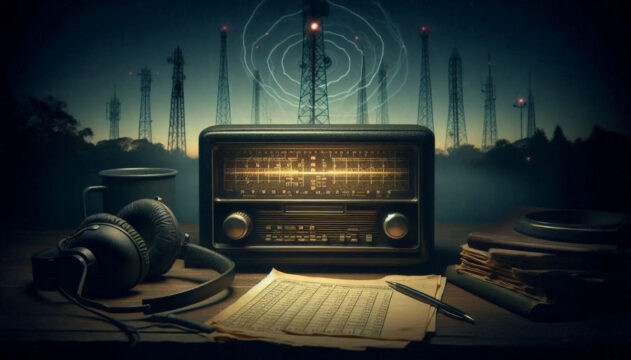Old-school static wins the spy wars

This is one of the coolest things I’ve learned recently: Foreign intelligence agencies still use good ol’ radio to share top secrets. Even with all the powerful tech at their fingertips, radio use in espionage has actually gone up in popularity since the 2010s. Pretty wild.
Russia in particular loves this technique. Why? Intelligence agencies don’t trust the internet. Makes sense.
📻 Spy-Fi: The original wireless network
Foreign agencies have been using shortwave radio frequencies to broadcast coded messages for decades.
Starting in the mid-1960s, if you tuned your radio to shortwave frequencies between 5.422 and 16.084 megahertz (MHz), you might hear music … or you might hear a woman’s voice with an English accent reading number combinations.
The U.K.’s MI6 intelligence agency and other spy networks used these “number stations” until at least 2008 to talk to operatives in the field. Whoa.
🤫 All secrets, all the time
This tactic is still very much alive and well. In 2020, the FBI discovered messages being sent to Russian deep-cover officers living in Massachusetts. Last year, researchers caught Russia’s foreign intelligence agency, SVR, broadcasting a test transmission in French.
But it’s not just Russia. Taiwan is active now. The “Star Star” station (V13) broadcasts coded messages to agents in mainland China, complete with flute music intros.
So, what’s the advantage? Even encrypted phones can be hacked. It’s also easier than ever to plant spyware on a device.
☝️ The secret’s in the signal
In each broadcast, the sender and receiver use what’s called a “one-time pad” to encrypt and decrypt the message. It’s basically a matching list of random numbers, no fancy spy gear required.
Of course, anyone listening could pick up on other patterns and blow up an agency’s spot. For example, a broadcast pattern could reveal how many agents there are and when or where they’re active.
When the FBI discovered the 2020 broadcasts, they realized the messages corresponded to the specific rooms active operatives were in!
⚡️ The static society
Russia still has a shortwave station nicknamed “The Pip” that sends out nonstop beeps, with the occasional voice cutting in. It’s a perfect example of how old-school spy tactics never really go out of style.
Even with satellites, encrypted apps and AI everywhere, number stations are still going strong. They’re simple, anonymous and nearly impossible to trace.
If you’re loving this story and want to geek out, check out Priyom, a group of international radio enthusiasts who track number stations around the world. They have chat rooms to swap stories, and their website follows intelligence, military and diplomatic communication via shortwave radio.
This deep dive is now over, over.
😂 The FBI is raiding an alleged spy’s apartment when they discover a hard drive labeled “KGB.” One of the agents holds it up and asks, “Why wouldn’t he just write 1TB?” (Oh, geek humor … Sometimes, it’s harder to get than a ground-floor hotel room in Moscow for a Russian operative!)
Tags: FBI, internet, network, radio frequencies, tech